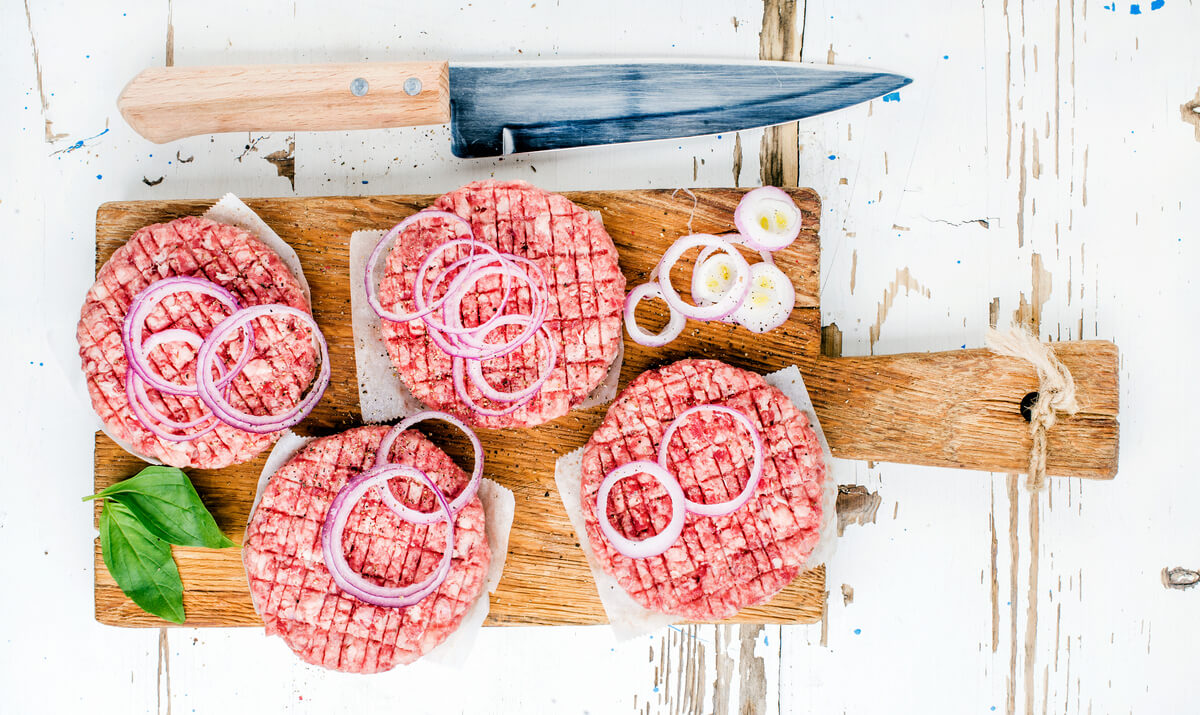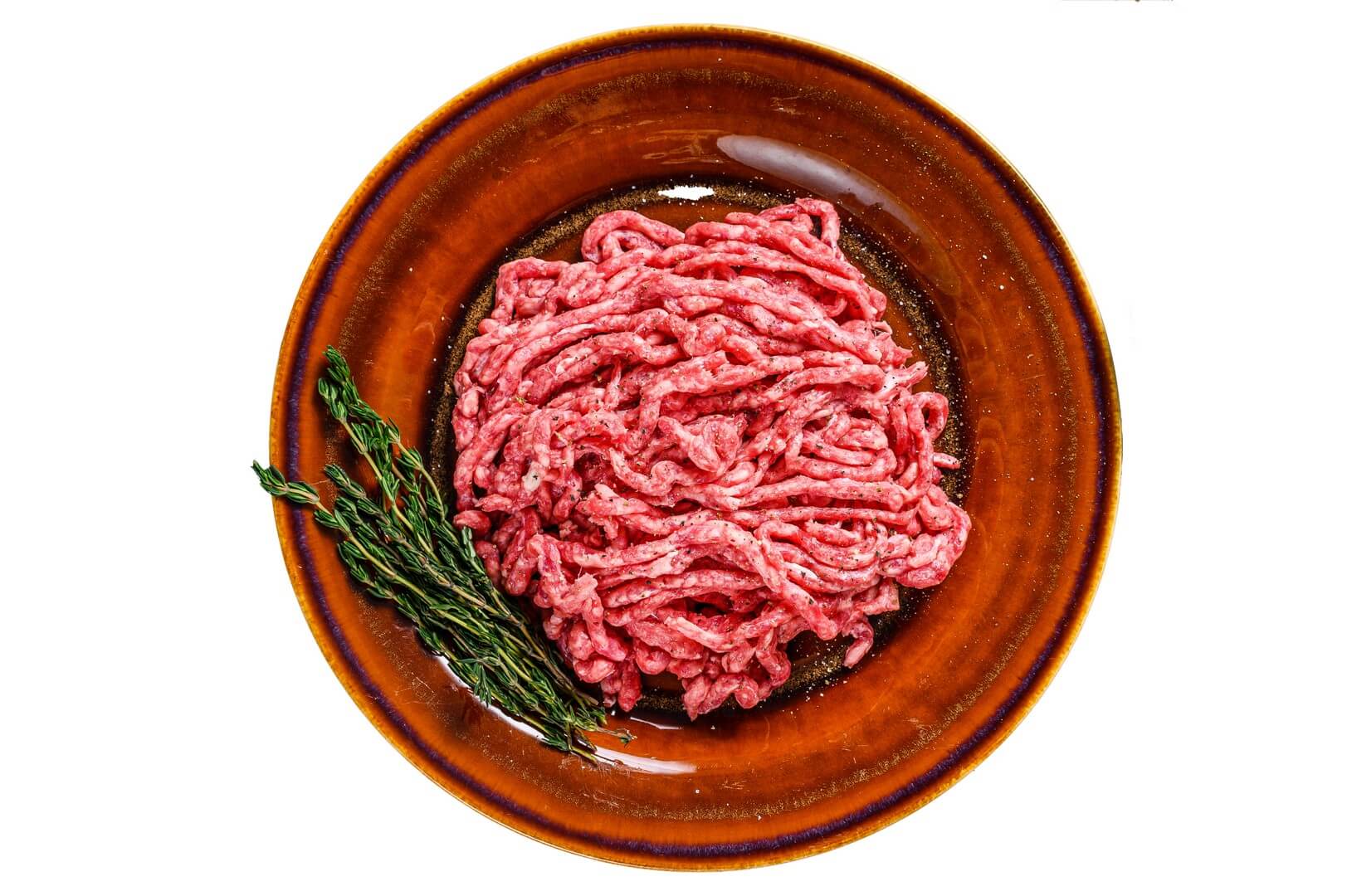Wagyu beef is a well-respected food ingredient in refined cooking techniques. It is renowned globally for its unrivaled taste, feel, and marbling. Ground Wagyu beef is a type of this special meat. It offers an amazing cooking experience, even when minced.
This beef is from Wagyu cattle, known for its marbled fat in the meat. This fat marbling makes the meat very tender when cooked, giving it a juicy and flavorful taste. The fat distributes throughout, keeping the meat moist. Wagyu is renowned for the balance of fat and protein in every bite. The grinding process spreads the fat evenly to enhance and nourish every bite.
Origins and history
Wagyu cattle are Japanese cows. There are four different kinds: Black, Brown, Red Shorthorn, and Polled. These cattle breeds have a long history in Japanese culture, tracing back to the 2nd century CE. Originally, they bred these cows to work on farms. Later, people started valuing them for their tasty meat due to changes in the late 1800s. Prized for robust constitutions for agricultural work. Premium meat quality recognized in 19th century. All four types of Wagyu cows have marbled fat in their muscles that cooks into a rich, buttery texture. As labor changed, people began to love the unique flavor of their high-quality meat. It’s prized for its melt-in-your-mouth texture, balancing fat and protein nicely.
Throughout the 1970s, the Japanese authorities ended the prohibition on exporting cattle. This allowed Wagyu genetics to enter nations including America, Australia, and Canada. Breeding programs in these countries started by combining Wagyu with local breeds. The goal was to emphasize certain qualities. As a result, versions such as American or Australian Wagyu emerged. Recognize the finest quality Wagyu as originating primarily from Japan, including Kobe. Matsusaka, and Ohmi.
Culinary importance

Ground Wagyu beef has great value in cooking because it can be used in many foods like hamburgers, meatballs, chili, and Bolognese sauce. Its high ratio of fat to meat makes it very tasty and soft. It can make even easy meals feel special.
The fatty marbling in Wagyu beef contributes mightily to its singular taste. Its marbling is rich in monounsaturated fats and oleic acid, lending the meat a sweet savor beyond compare to other cattle breeds. As it cooks, the marbling renders out, amplifying the succulence and complexity of flavor in a manner unrivaled.
Whether used to enhance traditional dishes or develop new flavors, finely ground Wagyu beef underscores how superb ingredients form the foundation of delectable meals. With origins dating back and a place at tables worldwide, Wagyu beef represents luxury fare and fine dining. Its rich marbling promises buttery tenderness and robust taste, elevating any recipe.
Wagyu Beef ground production process

The process creating finely marbled Wagyu beef starts on the farm and ends on our plates. Wagyu cows are bred and well looked after with great care and precision. They follow strict feeding routines refined over many years. These animals eat a special diet with grains, rice straw, and even beer. It helps create the special marbling in the meat.
Wagyu beef has a special taste and tenderness because of how it is raised carefully. When the cows reach about three years old and the right size, they are humanely slaughtered. The meat is then handled carefully to keep its quality high. Specific cuts used for ground Wagyu beef are finely chopped to balance the meat and fat just right. This balance is key for the great flavor and soft texture. The marbling in the muscle affects how good ground Wagyu beef is. It influences its grading and quality. This marbling contains healthful fats that melt when cooked. This melting enhances both the flavor and tenderness of the meat.
Wagyu ground nutritional information
Wagyu beef mince is famous for its amazing flavor, texture, and unique nutrients. Compared to regular beef, Wagyu beef mince has more healthy fats good for the heart, like oleic acid. These healthy fats also add to the total calories in the beef, providing more energy. Fats enhance flavor and texture. High calories can affect weight and diet goals. In moderation, Wagyu beef mince is a tasty way to get protein, iron, and B vitamins. It satisfies both taste and nourishment.
Wagyu beef is thought to be healthier because it contains more advantageous fats. Still, it incorporates saturated fats and cholesterol similar to other sorts of beef. Eating Wagyu beef in moderation is important for a balanced diet. Enjoy in moderation as part of a healthy diet. Pair with other nutrient-dense foods.
Comparison of Ground Meats
| Ground Meat | Fat Content (%) | Flavor | Best Use | Nutritional Benefits | Cost |
| Wagyu | 15-25 | Rich, buttery, luxurious | Gourmet burgers, lasagna, premium dishes | High in monounsaturated fats and omega-3 fatty acids | $$$ |
| Regular Beef (80/20) | 20 | Robust, beefy | General cooking, burgers, meatloaf | High in protein, iron, and vitamin B12 | $ |
| Turkey (93/7) | 7 | Mild, slightly gamey | Healthier alternative, turkey burgers, chili | Low in fat, high in protein, source of vitamins B6 and B12 | $ |
| Chicken (95/5) | 5 | Mild, versatile | Healthier alternative, chicken meatballs, tacos | Low in fat, high in protein, source of niacin and selenium | $ |
| Pork (85/15) | 15 | Rich, slightly sweet | Sausages, meatballs, Asian dishes | High in protein, thiamin, and vitamin B6 | $$ |
| Lamb (85/15) | 15 | Strong, gamey, rich | Mediterranean dishes, lamb burgers, moussaka | High in protein, vitamin B12, and zinc | $$ |
Ground beef Wagyu buying guide
When buying real Wagyu beef, keep these tips in mind. It’s important to be mindful when getting Wagyu beef.
Real Wagyu beef is from Japan. You can find American Wagyu in stores too. Make sure to check the label to see where the product is from. Wagyu beef quality is judged by color, texture, and marbling. Japanese Wagyu beef is top quality, rated as A5. Choose reputable sellers when purchasing Wagyu, whether in person or online.
The cost of ground Wagyu beef differs based on where it comes from and its quality level. Japanese Wagyu beef usually costs more than similar beef from America or Australia. The price can vary based on factors such as the cattle’s diet and living conditions. Finer Wagyu beef from Japan, raised in a traditional way, usually costs more at markets. However, consumers should .
Sustainability and Ethics
Wagyu beef farming, like other livestock raising, has environmental and ethical considerations. It provides food for many. Resources such as land, water, and food help with growth. Greenhouse gases are naturally released. How cattle are cared for and whether meat helps or harms people long-term also matter. Overall, open discussion of tradeoffs helps all sides.
Sustainable options include plant-based meat and lab-grown meat for the environment. Still, these options must taste as great as Wagyu beef.
Conclusion and Future Trends
Interest in ground Wagyu beef is increasing. Buyers want meat that tastes great and is high quality. This pattern may inspire new Wagyu beef creations and promotions. Ideas include sustainable farming and direct sales. Also, partnerships between farmers and restaurants are encouraged.
The Wagyu cattle industry faces a challenge and an opportunity. The popularity of plant-based and artificial meats is rising. This trend can inspire new Wagyu options, enhancing the breed’s luxury reputation. Producers can showcase Wagyu’s unique flavor and texture, appealing to discerning customers. They can do so using thoughtful and innovative methods with natural ingredients.
FAQ
- “Wagyu Beef Nutrition” – FatSecret
- “What’s your beef? An ethicist’s guide to giving up meat” – Economist
- Yamamoto, T., & Takahashi, H. (2012). Historical and geographical aspects of Wagyu beef (Japanese beef) and genetic diversity of Japanese Black cattle. Animal Science Journal, 83(5), 418-429.
- Childs, S., & Smith, G. C. (2008). Effect of the plane of nutrition of beef cows during mid to late gestation on cow and calf performance to weaning. Journal of Animal Science, 86(7), 1686-1695.
